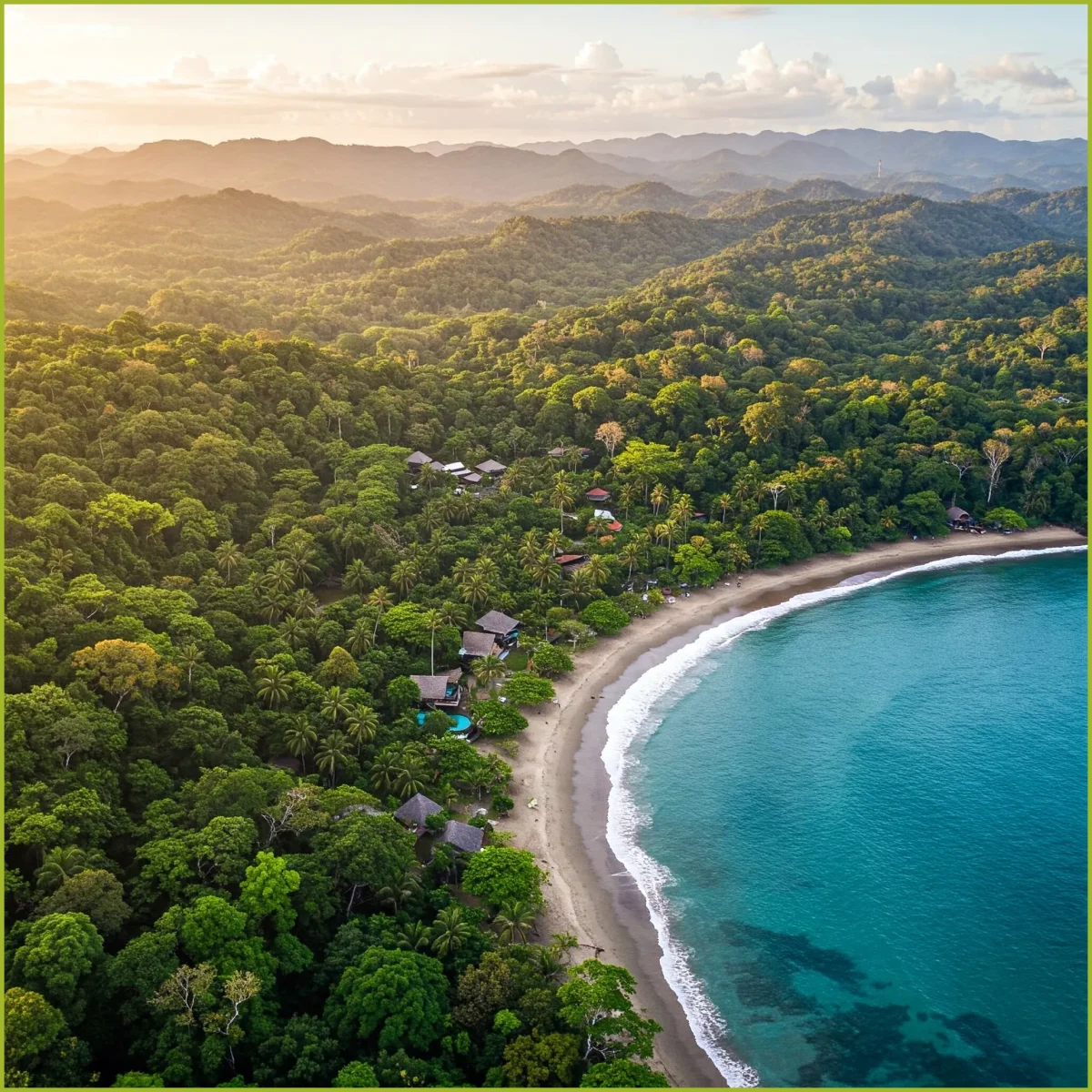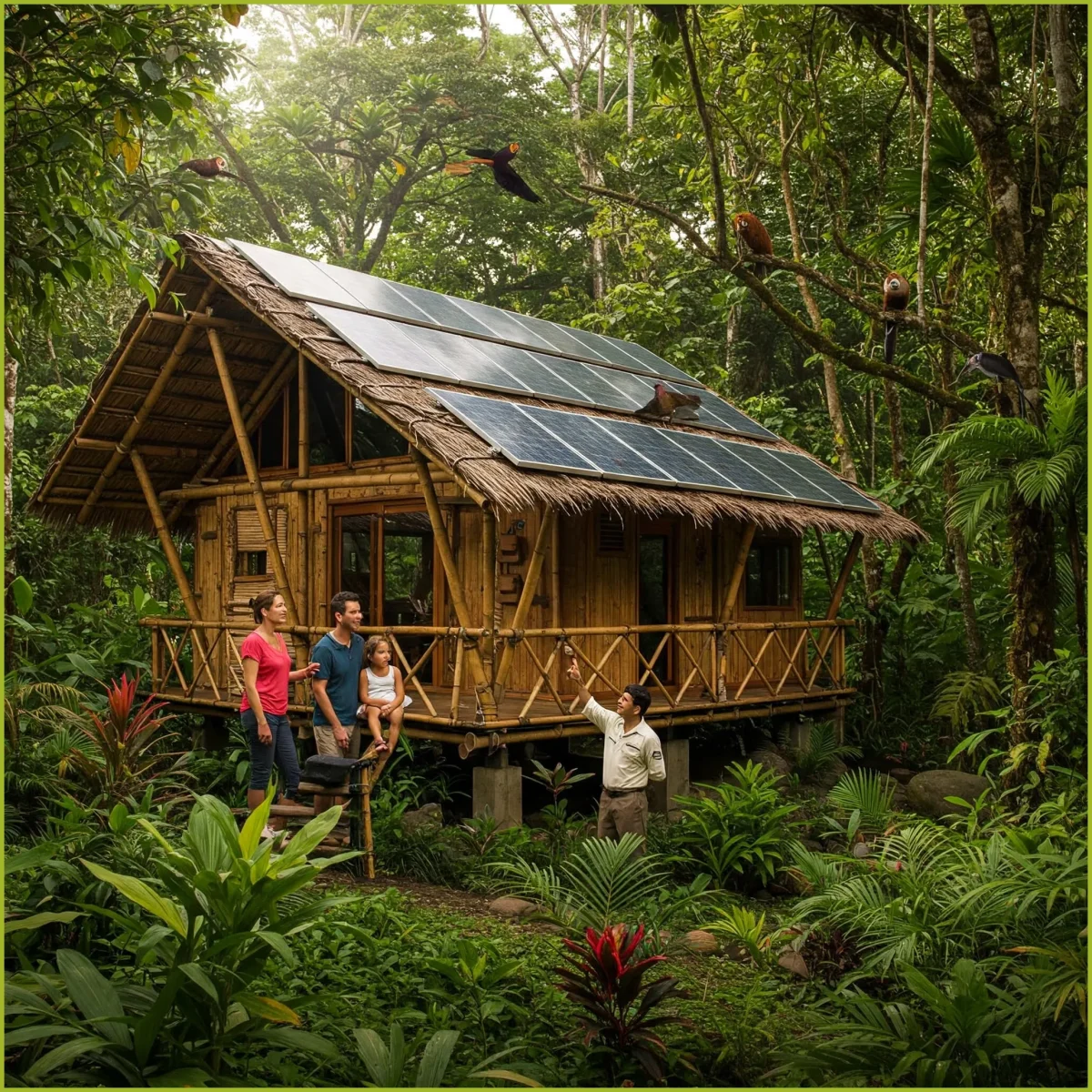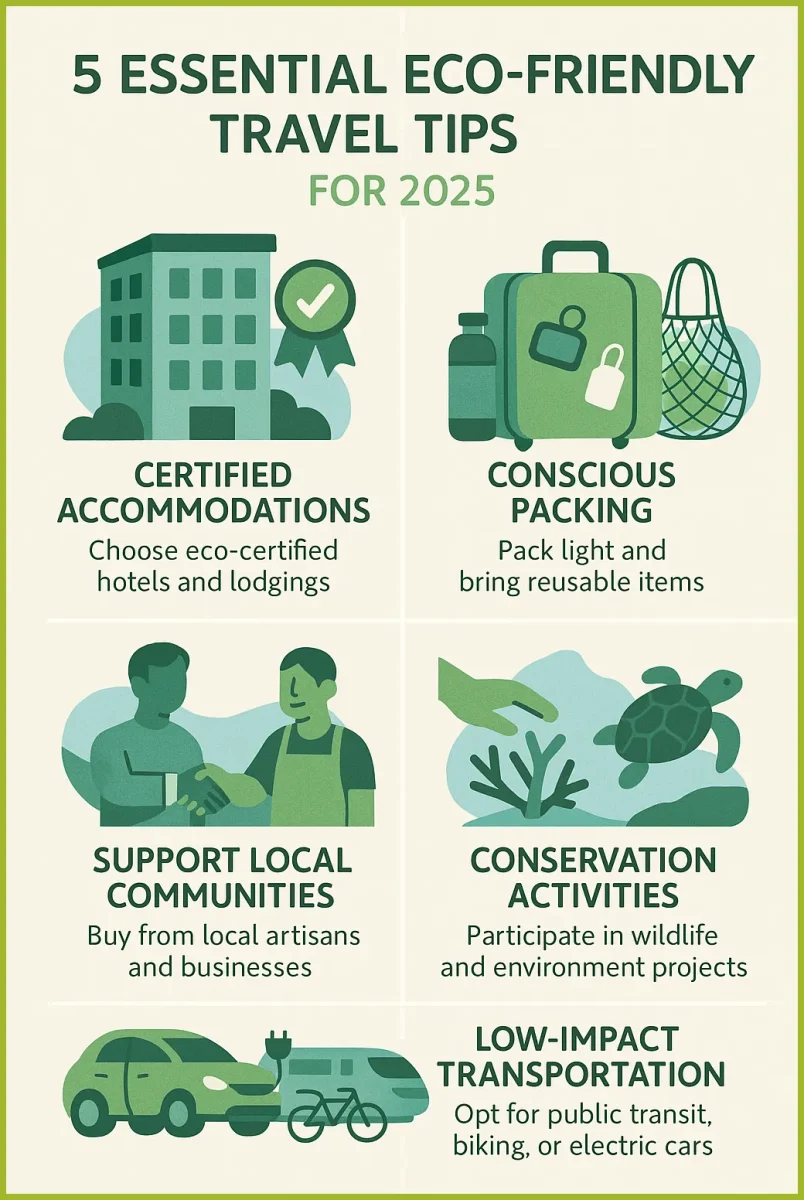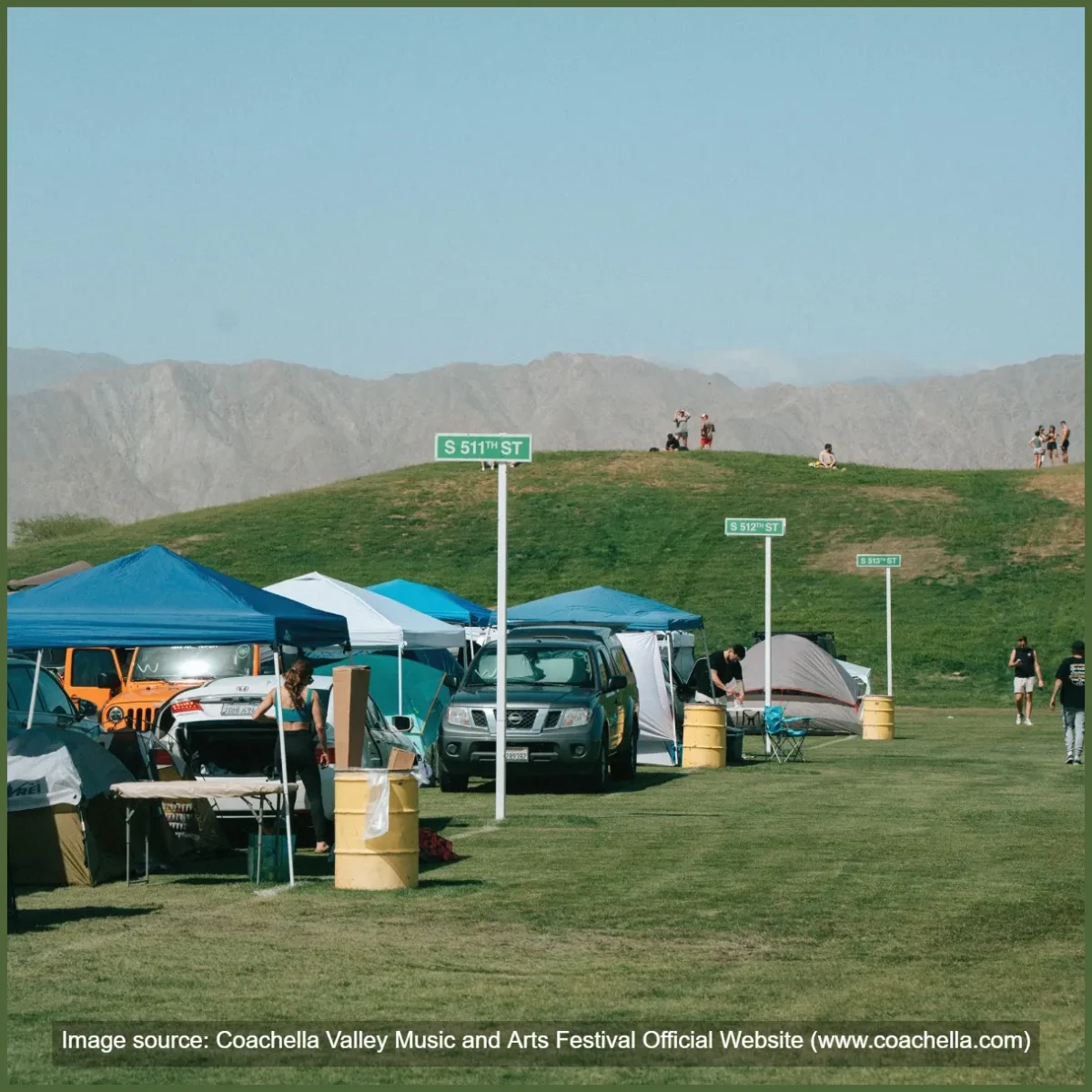
Let me tell you something, friends. As a passionate traveler who’s seen her fair share of beautiful destinations over the years, I’ve become increasingly aware of how our wanderlust impacts the planet. With searches for “air pollution definition” and “biodiversity definition” skyrocketing lately, it’s clear I’m not alone in this awakening. That’s why I’ve put together this comprehensive guide to sustainable travel destinations and eco-friendly tourism practices for 2025 that won’t leave you feeling guilty about your carbon footprint.
Why Sustainable Tourism Matters Now More Than Ever
Look, I remember when we could travel without giving much thought to our environmental impact. Those days are gone, honey! With climate change accelerating and biodiversity loss reaching alarming levels, the way we travel matters tremendously.
Sustainable tourism isn’t just a buzzword—it’s a necessity. It means traveling in a way that:
- Minimizes negative environmental impacts
- Supports local economies and communities
- Preserves cultural heritage
- Contributes to biodiversity conservation
As someone who’s watched popular destinations become overrun with tourists and once-pristine beaches fill with plastic, I can tell you that making more mindful travel choices feels incredibly rewarding. Trust me on this one!
Top Eco-Friendly Travel Destinations for 2025
1. Costa Rica: The Pioneer of Eco-Tourism

Costa Rica has long been my go-to recommendation for friends wanting to dip their toes into sustainable travel. This Central American gem isn’t just talking the talk—they’re serious about conservation with nearly 30% of their land protected as national parks or reserves.
Why I love it:
- They’re aiming to become carbon-neutral by 2025
- You can stay in amazing eco-lodges on the Osa Peninsula
- Participate in sea turtle protection programs
- Explore biodiversity hotspots like Corcovado National Park
When my family visited last year, we stayed at an eco-lodge powered entirely by solar energy and staffed by locals. The guided rainforest tours taught my kids more about biodiversity than any science class ever could!
2. Iceland: Renewable Energy Wonderland

If you haven’t experienced Iceland’s otherworldly landscapes yet, 2025 might be your year. Iceland harnesses nearly 100% renewable energy for its facilities, making it an excellent choice for the eco-conscious traveler.
What makes Iceland special:
- Geothermal spas and accommodations using renewable energy
- Hybrid-energy cruise ships exploring the fjords
- Electric car rentals for road-tripping around the island
- Breathtaking experiences of glaciers and volcanoes with minimal impact
Pro tip: Consider visiting during the shoulder seasons (May or September) to avoid the summer crowds and reduce strain on popular destinations.
3. Bhutan: The Carbon-Negative Kingdom

Bhutan isn’t just carbon-neutral—it’s carbon-negative, meaning it absorbs more carbon than it produces. Talk about overachieving! This Himalayan kingdom prioritizes what they call “Gross National Happiness” over GDP, and their tourism approach reflects these values.
What you’ll love:
- Sustainable trekking experiences through the Himalayas
- Strict tourism policies ensuring minimal environmental impact
- Rich cultural immersion in Buddhist traditions
- Community-based tourism that benefits locals directly
Yes, the mandatory daily fee for tourists can seem steep at first glance, but consider it an investment in preserving one of the world’s most pristine environments. Believe me, it’s worth every penny!
4. Singapore: Urban Sustainability Leader

For those who prefer city vibes over wilderness retreats, Singapore shows that urban destinations can be sustainable too. This island city-state achieved nation-wide sustainable destination certification and continues to impress with its green innovations.
Singapore’s green initiatives:
- Stunning green corridors connecting urban parks
- Eco-friendly hotels implementing food waste biodigesters
- The ambitious Green Plan 2030 transforming tourism practices
- Attractions showcasing sustainable urban planning
I was blown away during my recent visit to see how they’ve integrated nature into their urban landscape. The Gardens by the Bay is a perfect example of how cities can be both developed and green!
5. The Azores, Portugal: Atlantic’s Hidden Gem
I’m obsessed with finding affordable tropical destinations. The Azores archipelago feels like Hawaii’s sustainable European cousin, with volcanic landscapes, hot springs, and incredible marine life.
Sustainability highlights:
- Strong ecosystem preservation policies
- Volcanic hiking trails with strict visitor management
- Eco-lodges that protect local biodiversity
- Responsible whale watching practices
After experiencing the island’s commitment to preserving their natural resources while still welcoming tourists, I was inspired to rethink how I travel everywhere else.
Essential Eco-Friendly Travel Tips for 2025
Choose Certified Accommodations
One of the easiest ways to ensure your stay aligns with sustainable values is by booking accommodations with recognized green certifications. Look for certifications like:
- Global Sustainable Tourism Council standards
- Green Tourism badges
- Ecotourism Australia certifications
These certifications aren’t just marketing fluff—they require properties to meet specific standards for waste management, energy efficiency, water conservation, and community engagement.
When booking, I always check for these credentials or visit the hotel’s sustainability page.
Pack Consciously and Travel Light
Y’all, I used to be the worst overpacker! But I’ve learned that traveling lighter isn’t just easier on my back—it’s better for the planet too. Every extra pound requires more fuel to transport.
My sustainable packing essentials:
- Reusable water bottle (with filter if traveling where tap water isn’t safe)
- Shampoo and soap bars instead of liquid toiletries
- Reusable shopping bag that folds tiny
- Bamboo utensil set for street food without the plastic waste
Before purchasing special “travel gear,” check out what you already own. The most sustainable product is often the one you already have!
Support Local Communities
Let’s be real: one of the joys of travel is shopping and bringing home treasures! But how and where you spend your money makes a huge difference.
Ways to support local economies:
- Stay in community-run homestays or lodges that reinvest in local health and education
- Eat at family-owned restaurants serving locally-sourced food
- Purchase souvenirs directly from artisans
- Participate in authentic cultural experiences led by community members
During my stay in Costa Rica, we booked a cooking class with a local family. Not only did we learn to make the best empanadas I’ve ever tasted, but our payment went directly to helping their daughter’s education. Talk about a win-win!
Participate in Conservation Activities
Many destinations now offer opportunities to actively contribute to conservation efforts during your visit. These hands-on experiences are often the most memorable parts of a trip!
Conservation activities to consider:
- Coral planting in destinations like Fiji or the Maldives
- Wildlife monitoring volunteer programs in Africa
- Beach clean-ups (many resorts organize these weekly)
- Tree planting initiatives
My family spent an afternoon helping with sea turtle conservation in Costa Rica, and my kids still talk about it years later. These experiences create meaningful connections to places that last long after your tan fades.
Choose Low-Impact Transportation
Transportation typically accounts for the largest portion of your travel carbon footprint. While I’m not suggesting we all stop flying entirely (that’s just not realistic for many international destinations), there are ways to reduce your impact:
Transportation tips:
- Consider taking trains for shorter journeys when possible
- Use public transportation or bike-sharing programs at your destination
- If renting a car, opt for hybrid or electric options
- Choose airlines with newer, more fuel-efficient fleets
When planning your next trip, check if the destination has good public transportation before deciding to rent a car. Many European and Asian cities are actually easier to navigate without one!
Conclusion: The Future of Travel Is Green

As we become more aware of our environmental impact, sustainable tourism isn’t just a trend—it’s the future of how we’ll all explore this beautiful planet. The good news is that making more eco-conscious travel choices doesn’t mean sacrificing amazing experiences. In fact, I’ve found that these mindful approaches often lead to more authentic, meaningful connections with the places I visit.
By choosing destinations committed to sustainability, supporting local communities, minimizing waste, and being thoughtful about transportation, we can continue to satisfy our wanderlust while helping preserve these incredible places for future generations.
So, what’s your next sustainable adventure going to be? Whether you’re dreaming of Costa Rica’s rainforests, Iceland’s dramatic landscapes, or Singapore’s green innovations, I hope this guide helps you travel both happily and responsibly in 2025!
References and Further Reading
For more detailed information on sustainable tourism certifications and standards, visit the Global Sustainable Tourism Council.
To learn more about calculating and offsetting your travel carbon footprint, check out The Carbon Fund.
Have you visited any eco-friendly destinations recently? Share your experiences in the comments below!

